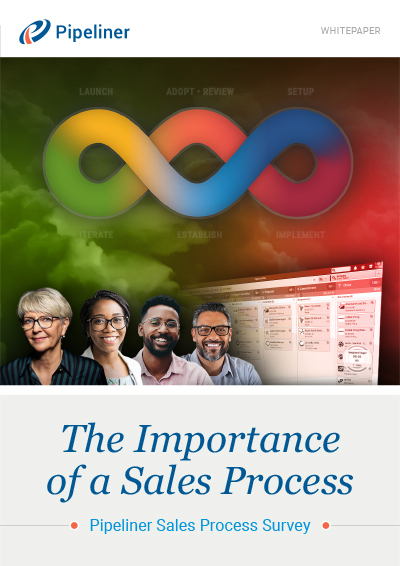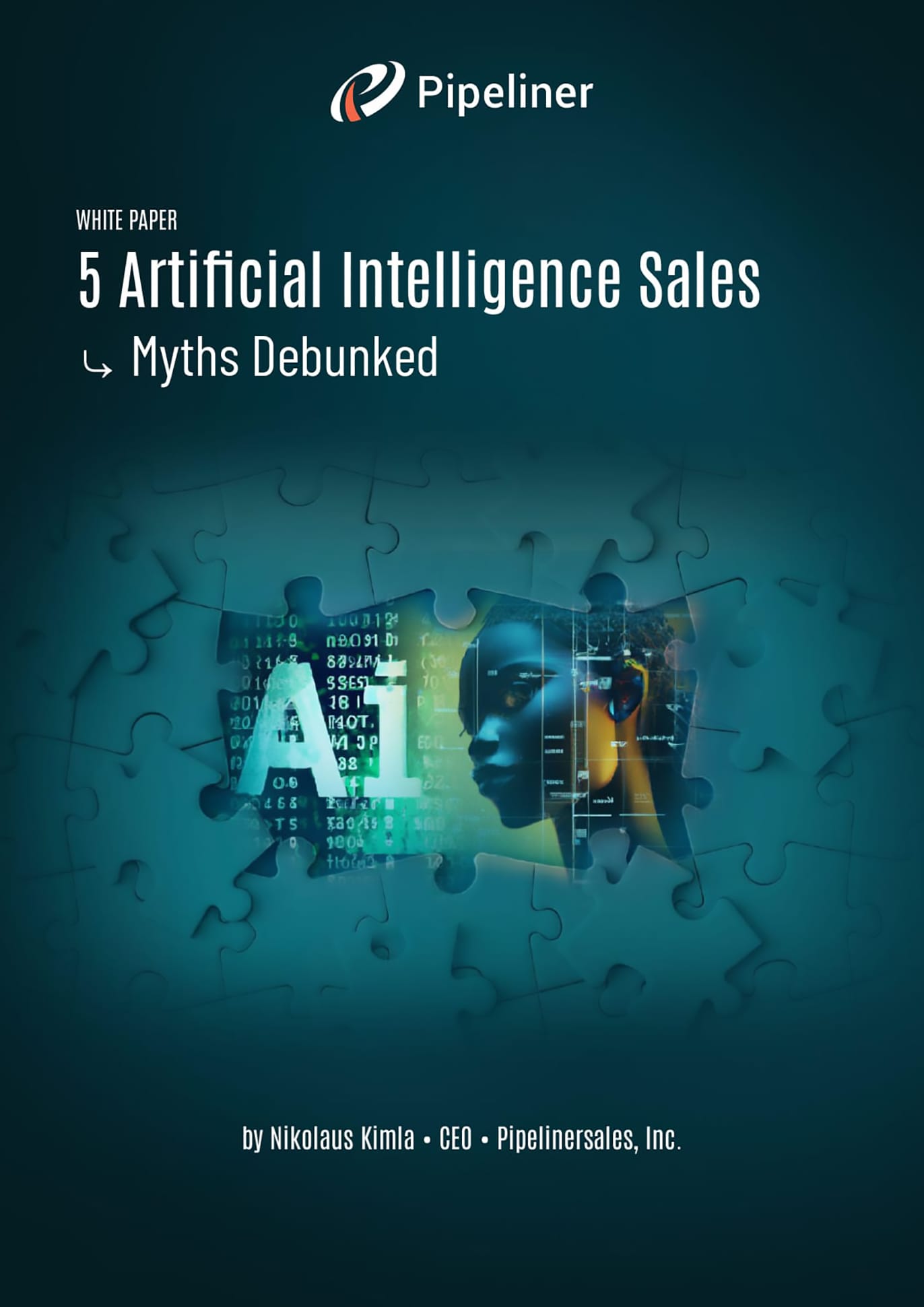Artificial Intelligence (AI) is no longer a futuristic concept; it’s a present-day reality transforming industries across the globe. In the realm of sales, AI is revolutionizing how businesses operate, strategize, and interact with customers. Pipeliner CRM stands at the forefront of this transformation, integrating advanced AI capabilities to enhance sales processes and drive success.
This article explores what AI is, its current role in sales, and where it’s headed, with a special focus on Pipeliner CRM’s innovative solutions.
What is AI?
“Artificial Intelligence” refers to the simulation of human intelligence processes by machines, especially computer systems. These processes include learning (acquiring information and rules for using the information), reasoning (using rules to reach approximate or definite conclusions), and self-correction. AI encompasses various technologies, such as machine learningMachine Learning Machine Learning is an aspect or type of artificial intelligence whereby a computer possesses the ability to learn various things by itself without explicitly being programmed to., natural language processing, and robotics, which enable machines to perform tasks that typically require human intelligence.
The Role of AI in Sales Today
AI is reshaping the sales landscape by providing tools that enhance efficiency, improve decision-making, and personalize customerCustomer Customer is an individual or an organization that purchases a product or signs up for a service offered by a business. interactions. Here are some key ways AI is currently used in sales, with examples from Pipeliner CRM:
Predictive AnalyticsPredictive Analytics Predictive Analytics refers to the field or tool that uses historical data, statistical models, emergent trends and other information to formulate an informed forecast about the future, usually with regards to the performance, growth, or feasibility of a business.
AI-driven predictive analytics in Pipeliner CRM analyze historical sales dataData Data is a set of quantitative and qualitative facts that can be used as reference or inputs for computations, analyses, descriptions, predictions, reasoning and planning. to forecast future trends and customer behavior. This enables sales teams to anticipate needs, allocate resources more effectively, and tailor their strategies to maximize outcomes.
Lead ScoringLead Scoring Lead Scoring is the process of assigning a relative value to each lead based on different criteria, with the aim of ranking leads in terms of engagement priority. and Prioritization
Pipeliner CRM uses AI to score and prioritize leads based on various criteria, such as engagementEngagement Engagement is the state or process of keeping a specific class of audience (employees, management, customers, etc.) interested about a company or brand and invested in its success because of its perceived relevance and benefits to the audience. levels, demographic information, and buying signals. This helps sales representatives focus their efforts on high-potential prospects, increasing the chances of closing deals.
Personalized Customer Interactions
AI enhances personalization by analyzing customer data and preferences. Pipeliner CRM’s AI capabilities allow for tailored communication and offers, improving customer satisfaction and loyalty. For instance, the AI-powered email assistant suggests relevant responses and follow-up actions, ensuring timely and personalized interactions.
Sales AutomationSales Automation Sales Automation is the act, practice or technique of using software to simplify, speed up or streamline the entire sales process or specific component activities such as customer tracking, forecasting, and inventory monitoring.
Automation is a significant advantage of AI in sales. Pipeliner CRM automates routine tasks like data entry, follow-up reminders, and scheduling, freeing up sales reps to focus on high-value activities. This not only boosts productivity but also reduces the risk of human error.
Enhanced Data Management
Pipeliner CRM’s AI-powered duplication checker ensures data accuracy by identifying and merging duplicate entries. This maintains a clean database, providing reliable information for strategic decision-making.
Where is AI in Sales Going?
The future of AI in sales is promising, with advancements that will further revolutionize the industry. Here are some trends and developments to watch for:
Advanced Predictive Analytics
Future AI systems will offer even more sophisticated predictive analytics, providing deeper insights into customer behavior and market trends. This will enable sales teams to be more proactive and strategic in their approaches.
Improved Personalization
AI will drive greater levels of personalization by leveraging more extensive data sets and advanced algorithms. This will result in highly tailored customer experiences, improving engagement and conversionConversion Conversion is the process of turning a target consumer into a paying customer; or more generally, the point at which a user performs a specific action favorable to a marketer or a seller. rates.
Natural Language Processing (NLP)
Advancements in NLP will make AI interactions more intuitive and human-like. Pipeliner CRM is expected to integrate improved NLP capabilities, allowing users to interact with the system using natural language commands, making it easier to retrieve information and perform tasks.
AI-Driven Sales CoachingSales Coaching Sales Coaching is the process of helping sales professionals improve their performance, efficiency, and impact largely through behavioral changes and the development of new skills.
AI will play a significant role in sales coaching by analyzing performance data and providing personalized feedback and recommendations. This will help sales reps improve their skills and achieve better results.
Enhanced Security and Compliance
As data security becomes increasingly important, AI will be crucial in identifying and mitigating security threats. AI systems will also help ensure compliance with regulations by automating monitoring and reporting processes.
Integration with IoT and Edge Computing
The integration of AI with Internet of Things (IoT) devices and edge computing will provide real-time data and insights, enhancing decision-making and responsiveness. This will be particularly beneficial for industries with complex sales processes and high-value transactions.
Experience Pipeliner CRM Now
Pipeliner CRM: Leading the AI Revolution in Sales
Pipeliner CRM is at the forefront of integrating AI into sales processes. By incorporating advanced AI features, Pipeliner CRM helps businesses streamline their operations, make data-driven decisions, and improve customer relationships. Here’s a look at how Pipeliner CRM’s AI capabilities are setting the stage for the future:
- Mobile OptimizationOptimization Optimization is the process or act of altering a system, design, or procedure such that it 1) attains full functionality or efficiency, or 2) generates maximum output, benefit, or impact. › Pipeliner CRM offers a fully optimized mobile experience, ensuring that sales teams can access critical information and perform tasks on the go. This includes offline capabilities and real-time data synchronization.
- Unified Communication Hub › Pipeliner CRM consolidates all communication channels, including email, phone calls, and social media, into a single interface, streamlining interactions and ensuring no communication is missed.
- Intelligent Lead Scoring › AI evaluates leads based on various parameters and assigns scores, helping sales representatives prioritize their efforts on high-potential prospects.
- AI-Powered Email Assistant › The integrated email assistant offers smart replies, follow-up reminders, and scheduling options, ensuring timely and effective communication with clients and prospects.
- Duplication Checker › An AI-powered duplication checker automatically identifies and merges duplicate entries, maintaining a clean and accurate database.
Pipeliner CRM is leading the charge with its advanced AI capabilities, providing tools that empower sales teams and drive success.
AI is transforming the sales industry by enhancing efficiency, improving decision-making, and personalizing customer interactions.
As AI continues to evolve, the future of sales looks brighter than ever, with smarter, more efficient processes and highly personalized customer experiences.
By embracing AI, businesses can stay ahead of the competition, optimize their sales strategies, and build stronger customer relationships. Pipeliner CRM’s commitment to innovation ensures that it will remain a vital tool for sales teams looking to harness the power of AI and drive growth in the digital age.
Feel free to explore Voyager Sales AI in Pipeliner and learn more.




